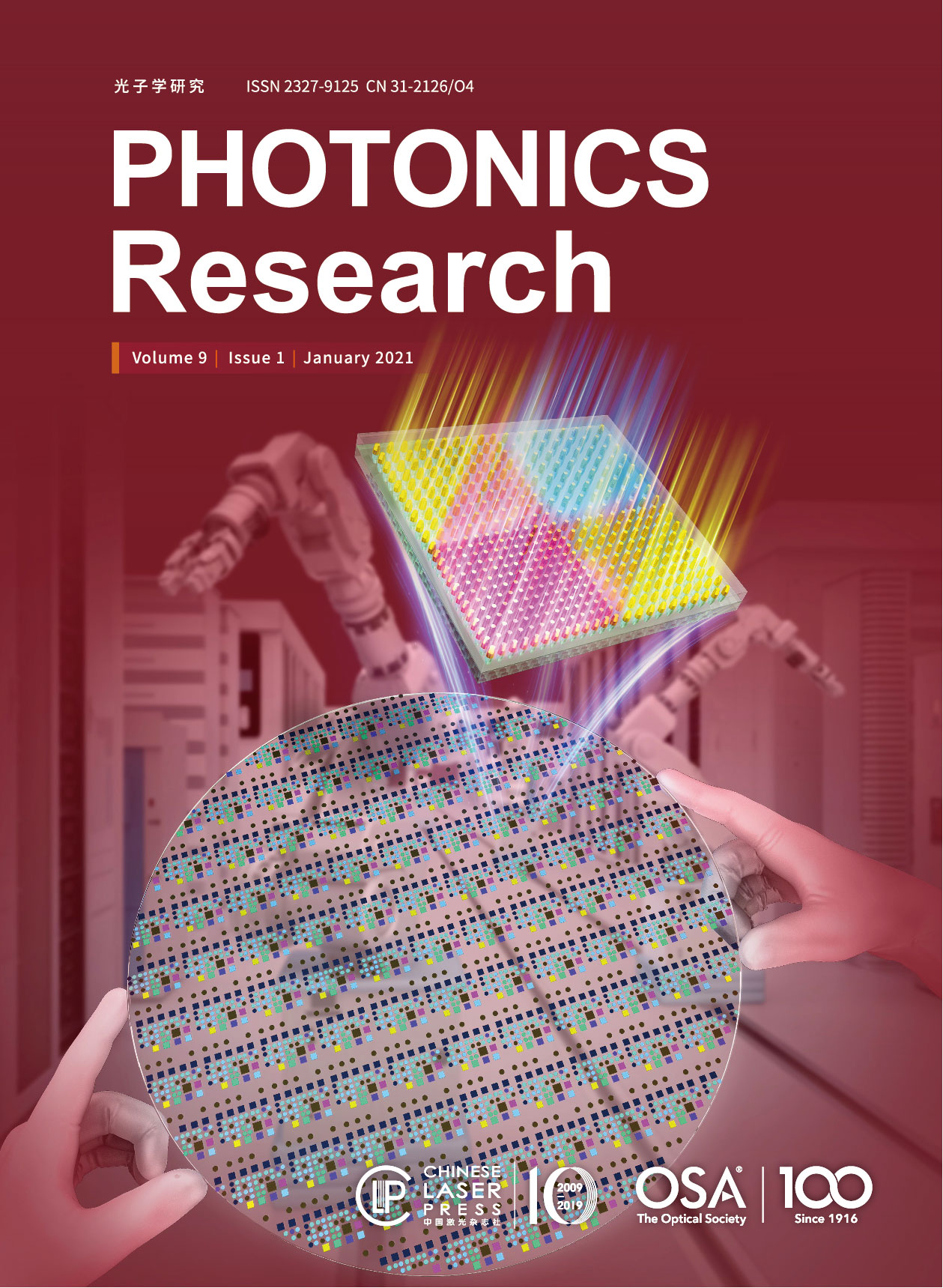Topological photonics has been opening exciting opportunities in recent optics research. In this feature issue, we present a collection of papers outlining state-of-the-art and application perspectives for this thriving field of research.
.- Publication Date: Dec. 24, 2020
- Vol. 9, Issue 1, TPB1 (2021)
We present a simple approach based on photonic reservoir computing (P-RC) for modulation format identification (MFI) in optical fiber communications. Here an optically injected semiconductor laser with self-delay feedback is trained with the representative features from the asynchronous amplitude histograms of modulation signals. Numerical simulations are conducted for three widely used modulation formats (on–off keying, differential phase-shift keying, and quadrature amplitude modulation) for various transmission situations where the optical signal-to-noise ratio varies from 12 to 26 dB, the chromatic dispersion varies from
- Publication Date: Dec. 24, 2020
- Vol. 9, Issue 1, B1 (2021)
We report on the experimental demonstration of two-photon quantum walks at the edge of a photonic Su–Schrieffer–Heeger lattice and compare them to those observed when launching photons at the edge of a homogeneous lattice. Whereas at the topological edge, one of the photons primarily remains close to the edge, both photons penetrate freely from the trivial edge into the bulk. This behavior manifests also in the average inter-particle distance, which is significantly larger at the topological edge. Hence, for a given propagation length, the entangled two-photon state launched at the topological edge extends over a wider domain of the lattice.
.- Publication Date: Dec. 24, 2020
- Vol. 9, Issue 1, A1 (2021)
- Publication Date: Dec. 18, 2020
- Vol. 9, Issue 1, 21 (2021)
- Publication Date: Nov. 05, 2020
- Vol. 9, Issue 1, 34 (2021)
- Publication Date: Dec. 14, 2020
- Vol. 9, Issue 1, 13 (2021)
- Publication Date: Dec. 23, 2020
- Vol. 9, Issue 1, 43 (2021)
- Publication Date: Dec. 23, 2020
- Vol. 9, Issue 1, 54 (2021)
- Publication Date: Dec. 24, 2020
- Vol. 9, Issue 1, 66 (2021)
- Publication Date: Dec. 04, 2020
- Vol. 9, Issue 1, 1 (2021)
- Publication Date: Dec. 23, 2020
- Vol. 9, Issue 1, 49 (2021)
- Publication Date: Dec. 24, 2020
- Vol. 9, Issue 1, 81 (2021)
- Publication Date: Dec. 22, 2020
- Vol. 9, Issue 1, 27 (2021)
- Publication Date: Dec. 24, 2020
- Vol. 9, Issue 1, 73 (2021)















